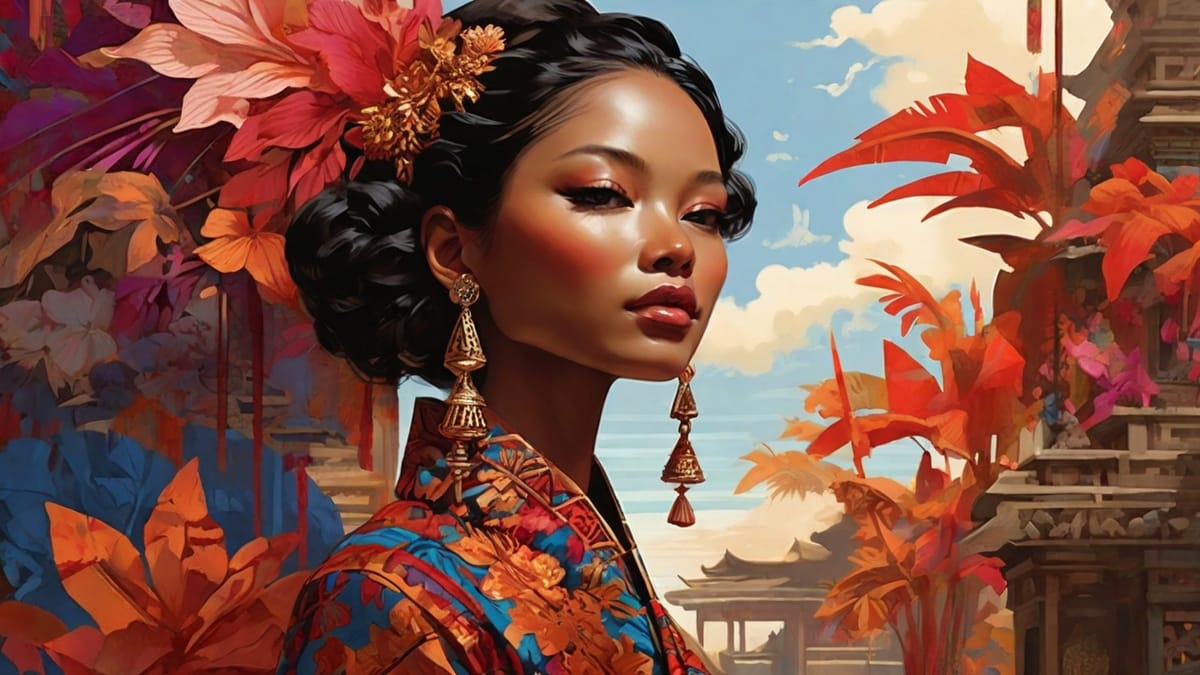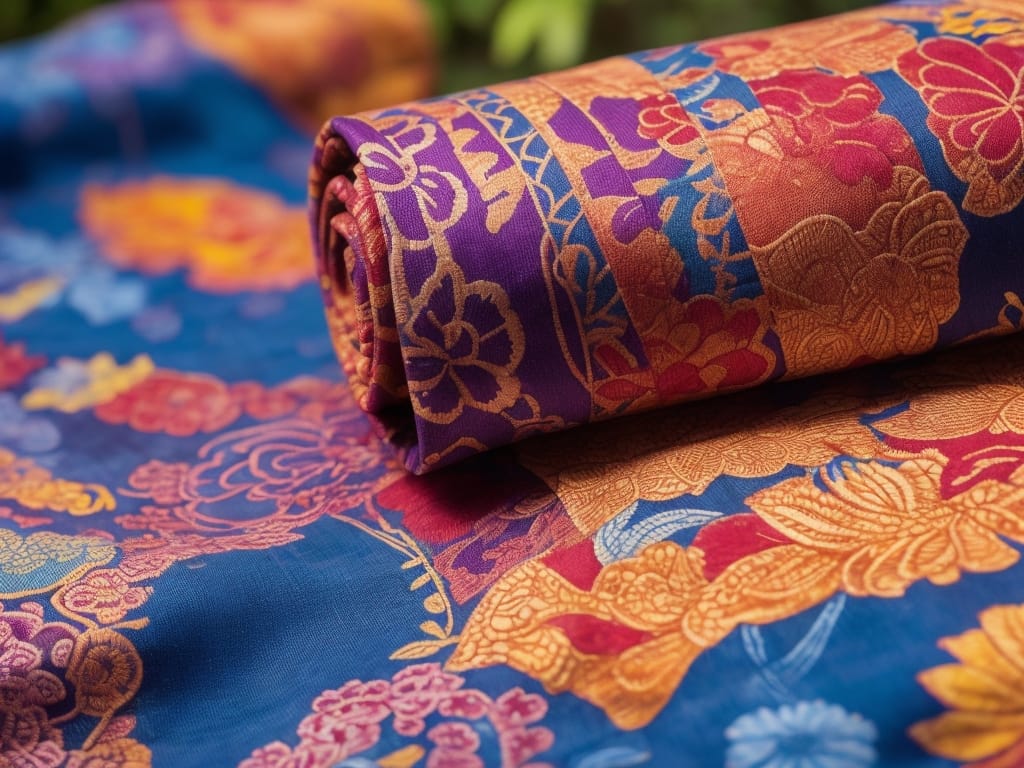Batik is a fascinating textile art deeply woven into the cultural fabric of Indonesia. And it has an interesting and diverse history.
Indonesian Batik is like a visual symphony. With intricate patterns and vibrant colors that go beyond just looking good.
It tells us about the past, shows how things have changed, and affects what's popular all around the world.
This article takes a deep dive into the fascinating journey of Indonesian Batik. From its humble beginnings to its current prominence.
About the historical significance of Batik in Indonesia
To understand the captivating charm of Indonesian Batik, you must take a journey through its fascinating historical roots.
Indonesian Batik is more than just an art form. It's a lively tapestry that brings together centuries of cultural heritage and historical importance.
You can trace its origins back to the island of Java (Indonesia's most populous island) where the art of Batik first took shape.
Since the 13th century, talented craftspersons have been making Batik. By putting wax on fabric and then dyeing it. This amazing art soon became a beloved part of Javanese culture. Captivating the hearts and minds of the Indonesian people.
What sets traditional Batik apart is not only its exquisite craftsmanship. But also the intricate patterns and motifs that hold deep symbolic meanings.
Every design has a story to tell. Sharing information about how much money you have, if you're married or not, or what you believe in.
From the delicate curves and bold lines to the vibrant colors that dance across the fabric. Every part of Batik shows the amazing and interesting culture of Indonesia.
Each region in Indonesia has its own distinct style of Batik. With specific motifs and color palettes that reflect the local culture and traditions.
Indonesian Batik showcases a stunning array of patterns. From the detailed floral designs of Yogyakarta to the geometric styles of Pekalongan, it shows the country's vibrant culture.

Here's what happened with Batik in the Dutch Colonial Era
Indonesia was 350 years under Dutch colonial rule. And this period had a huge impact on the development of Batik.
During this time, people valued Batik as a commodity for trade.
But also as a way to make art that shows what is happening in the world and how people are living.
When the Dutch came to Indonesia, they brought new patterns, colors, and ways of doing things that they mixed with traditional Batik. When people from the Netherlands and Indonesia came together, they created something special: Indo-Dutch Batik. A unique style that combines both cultures.
The Indo-Dutch Batik quickly became popular. And served as a symbol of the cultural exchange between the two nations.
But the Dutch colonial era also saw the rise of Batik as a form of resistance and expression.
Batik became a powerful tool for Indonesians to subtly express their discontent and aspirations for independence. Craftspersons started hiding messages and symbols in their designs. Making Batik a silent voice in the fight for freedom.
Batik is a symbol of national identity
After Indonesia declared its independence, Batik became a symbol of national identity and unity. To this day, the Indonesian people wear Batik on national events and holidays, reinforcing their shared cultural heritage.
Batik holds great importance in Indonesian society.
It's a part of everyday life, from birth to marriage and even death. People wear it on special occasions. For example, weddings and religious ceremonies. To pay tribute to tradition and show off the incredible craftsmanship of Indonesia.
Impressively, the Indonesian government declared Batik Day in 2009. And this aligned with UNESCO's recognition of Indonesian Batik as an Intangible Cultural Heritage of Humanity.
The recognition made Batik even more famous around the world. And it also helped people notice the artists who worked hard (and even dedicated their lives) to keep this old art alive.
Batik is not just a piece of fabric anymore.
It's a special symbol that represents Indonesia and shows who they are. And a reminder of the rich history, cultural diversity, and incredible resilience of the people in this country.
The art of Batik keeps evolving, as contemporary artists push its boundaries while staying true to its essence. Batik's vibrant patterns are making a splash on international fashion runways. And add a trendy touch to modern interiors.
The legacy of Indonesian Batik continues to shine. And it continues to captivate the world with its beauty and historical significance.
What does the process of creating Batik art look like?
Making Batik is an art that demands patience, skill, and creativity.
People still keep the traditional techniques alive. Despite the considerable amount of work involved. At the same time, modern innovations aim to simplify the process without losing the true essence of this ancient craft.
There are traditional batik-making techniques
In the traditional process of Batik-making, artists use a pen-like tool called "canting". With it, they create beautiful patterns on fabric. They start by applying hot wax to the fabric. Followed by adding natural dye for color.
After that, the fabric goes through a boiling process to remove the wax, revealing the detailed designs.
The artists repeat this painstaking process for various colors. Over and over again. With each layer getting more intricate.
It takes a skilled hand and a creative mind to handle such detailed work.
There are also modern innovations in Batik artistry
As technology gets better, Batik art has changed in many new ways.
The introduction of copper block printing called "cap" has sped up the process. Enabling commercial Batik production.
Additionally, synthetic dyes offer a broader range of colors. And silk screening allows for more precision in designs.
But even with all these improvements, modern Batik still represents Indonesian art and culture. Just like it always has.

Batik still play a role in contemporary Indonesian society
Even in modern times, Batik still has a special spot in Indonesian society.
Batik has greatly influenced fashion and design
Batik cloth and Batik designs have had a great impact on the fashion and design scenes in Indonesia.
Batik is a go-to option for both classic and modern fashion. With its distinctive patterns and long-lasting quality, this fabric offers endless possibilities.
Plus, you'll often find Batik's vibrant motifs in homeware and interior design. Showing how it has a huge influence on the design world.
Batik is a medium for social commentary
Apart from fashion, Batik often serves as a medium for social commentary. Artists mix traditional motifs with modern elements to show how society is changing. Making Batik a reflection of today's Indonesia.
Through Batik, artists explore different themes. For example: social change, environmental conservation, and gender inclusion. This goes to show that Batik has managed to stay socially relevant.

Indonesian Batik even influenced the whole world
Indonesian Batik has gone way beyond its origins. And now people all over the world know it for its unique artistic style and rich cultural value.
Batik is in the international art scene
Batik has gained global recognition, with exhibitions worldwide displaying the beautiful patterns and vibrant color palettes of Indonesian Batik.
It started as a local art form. And now people all around the world know and love it.
Plus, a lot of artists from around the world draw inspiration from Batik. And incorporate its techniques and motifs into their own creative works.
Indonesian Batik has influenced the global fashion trends
Batik's presence is prominent in the global fashion industry.
Renowned fashion designers often incorporate Batik motifs into their collections, introducing the world to Indonesia's vibrant textile heritage.
Also, you can find Batik more and more in regular fashion stores. This shows that people like clothes that draw inspiration from diverse cultures.
Want to read a personal story about Batik? Here it is:

Here's how they preserve and promote Batik for future generations
While people worldwide know about Batik, it's still important to keep it the same way it was a long time ago.
Batik in education and cultural institutions
Schools and cultural institutions are important in keeping Batik safe for the future.
Schools teach Batik-making as part of their curriculum. Helping young minds appreciate and understand this awesome art form.
Cultural institutions (e.g., museums and galleries) hold exhibitions that showcase the history and evolution of Batik, highlighting its cultural significance.
Government and non-government organizations also play a role in Batik preservation
The government and other groups help to protect and spread the love for Batik.
They help local artists, make rules to keep traditional Batik techniques safe, and even pay for research to find new ways to make Batik.
This hard work makes sure that Batik will keep inspiring and captivating future generations. Just like it has been doing for hundreds of years.
Batik is more than just fabric
Indonesian Batik will continue to be a timeless masterpiece. Weaving together history, culture, and creativity, making it an essential part of Indonesian heritage.
The next time you see a beautiful Batik fabric or pattern, just pause. And look at its pretty designs and the story it tells.
And remember that this art form is more than just a fashion statement.
It represents Indonesia's rich culture and artistic spirit.






Comments ()